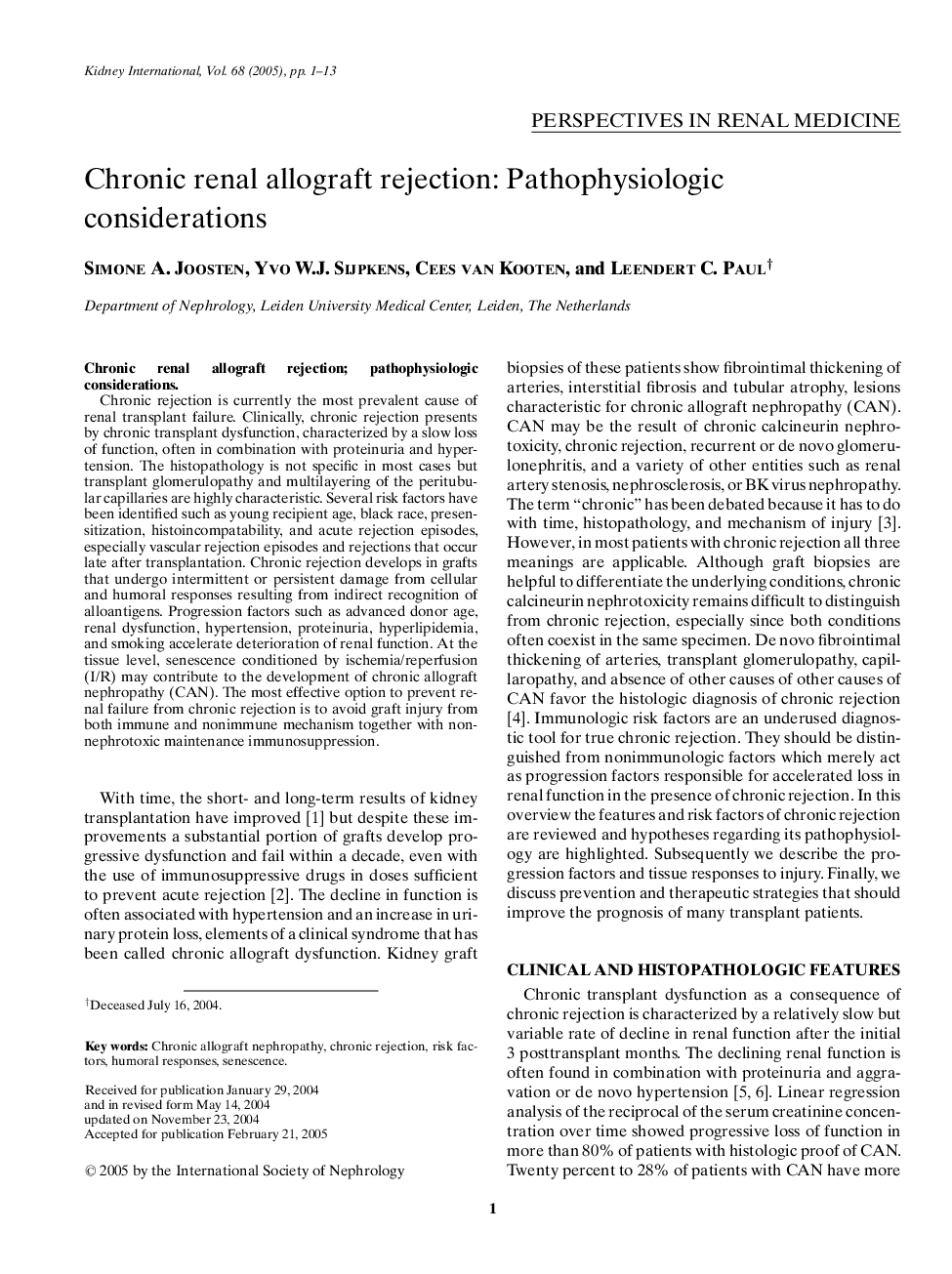| Article ID | Journal | Published Year | Pages | File Type |
|---|---|---|---|---|
| 9308458 | Kidney International | 2005 | 13 Pages |
Abstract
Chronic renal allograft rejection; pathophysiologic considerations. Chronic rejection is currently the most prevalent cause of renal transplant failure. Clinically, chronic rejection presents by chronic transplant dysfunction, characterized by a slow loss of function, often in combination with proteinuria and hypertension. The histopathology is not specific in most cases but transplant glomerulopathy and multilayering of the peritubular capillaries are highly characteristic. Several risk factors have been identified such as young recipient age, black race, presensitization, histoincompatability, and acute rejection episodes, especially vascular rejection episodes and rejections that occur late after transplantation. Chronic rejection develops in grafts that undergo intermittent or persistent damage from cellular and humoral responses resulting from indirect recognition of alloantigens. Progression factors such as advanced donor age, renal dysfunction, hypertension, proteinuria, hyperlipidemia, and smoking accelerate deterioration of renal function. At the tissue level, senescence conditioned by ischemia/reperfusion (I/R) may contribute to the development of chronic allograft nephropathy (CAN). The most effective option to prevent renal failure from chronic rejection is to avoid graft injury from both immune and nonimmune mechanism together with nonnephrotoxic maintenance immunosuppression.
Related Topics
Health Sciences
Medicine and Dentistry
Nephrology
Authors
Simone A. Joosten, YVO W.J. Sijpkens, Cees van Kooten, Leendert C. Paul,
